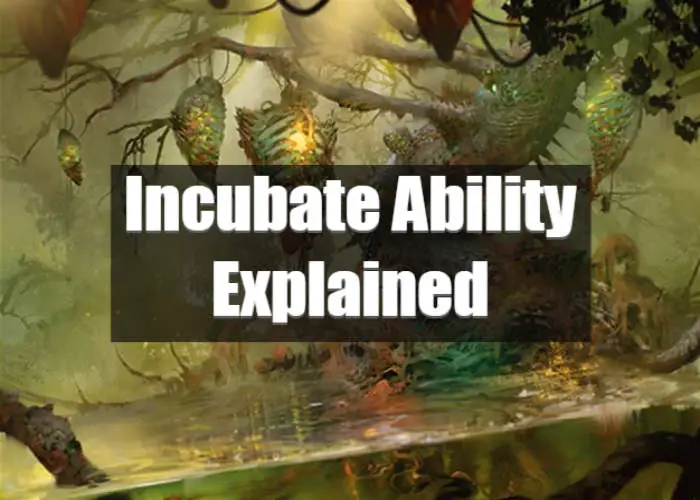Continuing our series of going over the brand-new mechanics from March of the Machine, today we have “Incubate.” New abilities (and new card types) coming into the game are always a hot topic and MOM has brought us some cool stuff. That said, this one may be the most interesting of them all. So, let’s jump right into “What is MTG Incubate and how does it work?”
The incubate ability creates double-faced” incubator tokens”, which are colorless artifact tokens that you can pay two mana to transform into a 0/0 phyrexian artifact creature. The card which created the token indicates the number of +1/+1 counters to put on the token.
So, you’re basically creating a cocoon with a certain number of +1/+1 counters on it. Then, for two mana, you can transform it into an actual 0/0 creature that will have that many +1/+1 counters on it. Pretty straightforward and very cool. Moving on from that basic definition, let’s dive deeper into the mechanic and take a look at some incubate cards.
How Does Incubate Work In MTG?
Let’s elaborate on what was covered above. Incubate will have a number that follows. For example, “incubate 2.” Incubate means you create a colorless artifact token. And the number refers to how many counters you’ll put onto. So, in this case, two. Incubate tokens say “Pay two generic mana: Transform this artifact. It transforms into a 0/0 Phyrexian artifact creature.”
Once you pay the two mana and transform the artifact into a creature, its power, and toughness would be equal to the number of counters it has. So, again, going with the example, you’d have a 2/2 phyrexian artifact creature after it transforms. Before the transformation, you simply have an artifact with +1/+1 counters on it.
How Good Is Incubate?
I think it’s quite good. So far, the ability comes stapled onto other cards with other effects. The concept of getting a creature or effect and also having another body tucked away for later is good. If you cast a creature that makes an incubator token and it gets removed, you’ve still got that other creature on standby for later – Essentially, you’re getting two bodies out of every card with the ability… There’s just a delay, which could also be a good thing.
Related: MTG Battle Cards Expalined – What They Are, How They Work, And More
For example, if someone wipes the
Further still, you have +1/+1 counters in the mix too. This means there are tons of synergies with other strategies. Any deck focused around artifacts, +1/+1 counters, or proliferation in general, is going to get some massive coincidental value from this ability.
The last thing I would like to mention is that these artifacts can be transformed at instant speed. This is yet another upside because if you have the mana to transform tokens on your opponent’s end step, your newly flipped creatures will be able to attack the next turn. Basically, if you’ve got mana to hold up, your phyrexian’s will have pseudo-haste.
Abilities that Work Well With Incubate?
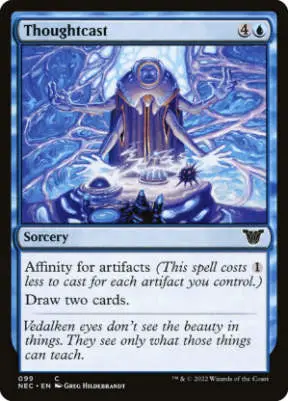

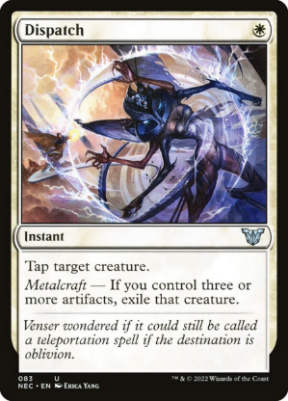
As I mentioned, anything that cares about the number of artifacts you control is going to like incubate. Some of the obvious ones Affinity for artifacts, Improvise, and Metalcraft, which are all pictured above. There’s also some heavy synergy with cards that interact with counters. Some examples of this are Winding Constrictor, Ozolith, the Ruptured Spire, Contentious Plan, and Tezzeret’s Gambit, and Drown in Ichor.
A few other ways to take advantage of incubate are cards like Springleaf Drum which would allow you to turn the tokens into mana even before you transformed them into creatures. And honestly, the number of cards, strategies, and decks in MTG that could benefit from Incubate is nearly limitless. Here are a few more examples, just to really drive the point home:
- Emry, Lurker of the Loch
- Ghirapur Aether Grid
- Mishra, Eminent One
- Vorinclex, Monstrous Raider
- Vorel of the Hull Clade
- Kami of Whispered Hopes
- Corpsejack Menace
- Winged Hive Tyrant
- Herald of Secret Streams
Lore & Flavor Perspective
Wizards of the Coast get’s an A+ from on in this department here as well. You’ve got things creating the pods that birth some of the phyrexian horrors invading the multiverse. Then after an incubation period, creatures of varying degrees of power slither from their cacoons to do the bidding of Elesh Norn.
I dig the way they represented this in gameplay. The incubation pod is actually on the battlefield and can be interacted with – Things can happen that affect the size/power of the creature inside. It may not be a threat as soon as it enters the mix but given enough time it will mature into something worthy of the glory of phyrexia.
Related: MTG Backup Expalined – What It Is And How It Works
Not only is this accurate to the lore and things for March of the Machine but it’s also interesting for gameplay. There’s some variance involved – It’s not simply a static two-turn delay (or something similar) to birth your creature. If you can get more value out of a longer incubation period, you have that option; If the creature would serve you best being sacrificed early? Well, you have that option too.
Card Gallery
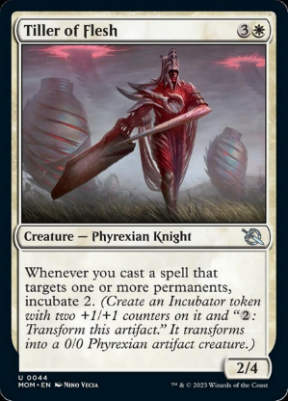
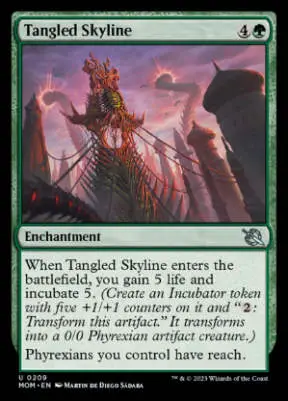
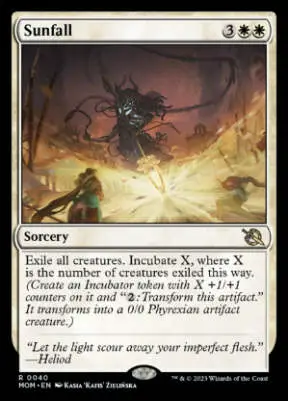
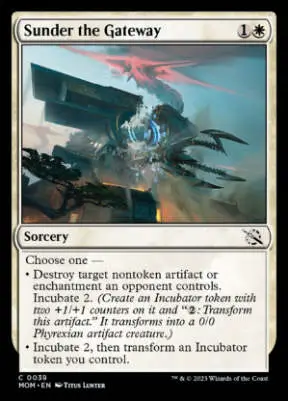
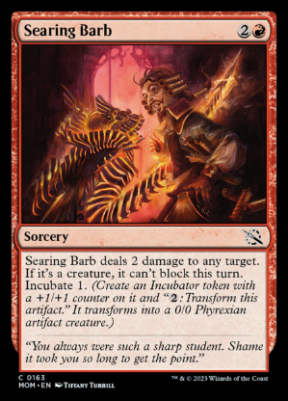
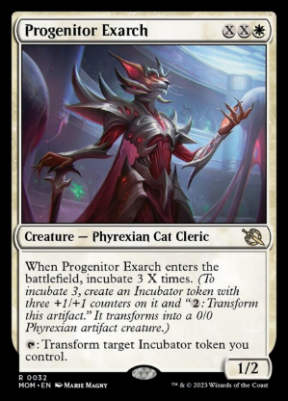

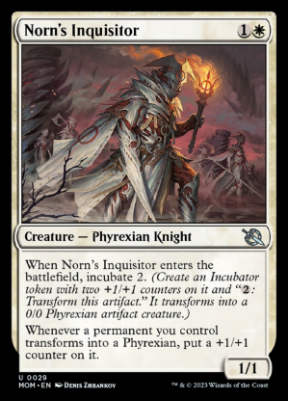
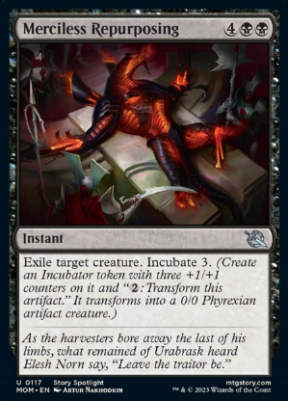
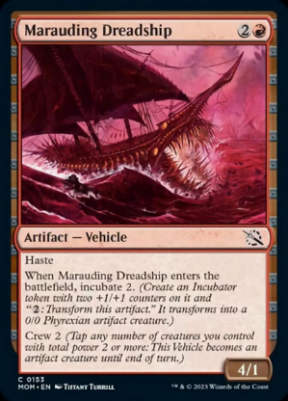
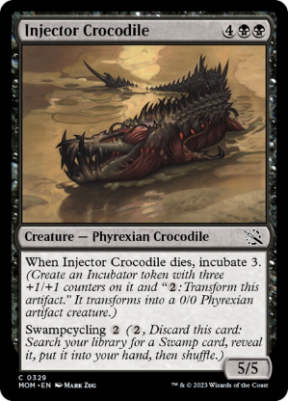
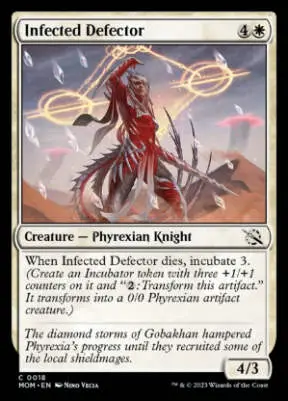
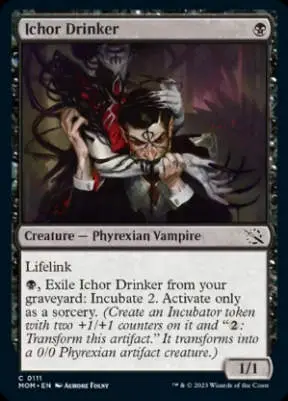

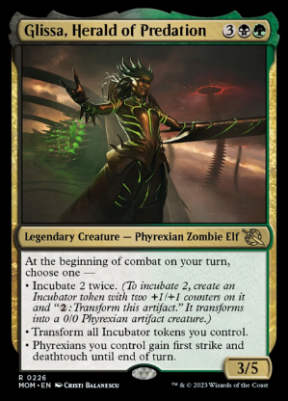

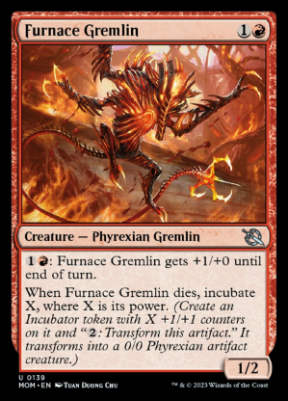
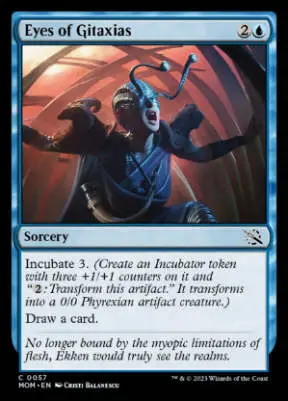
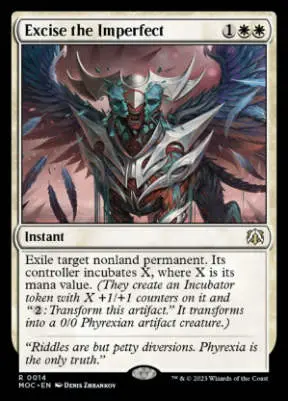

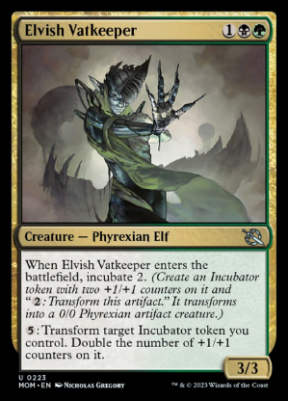
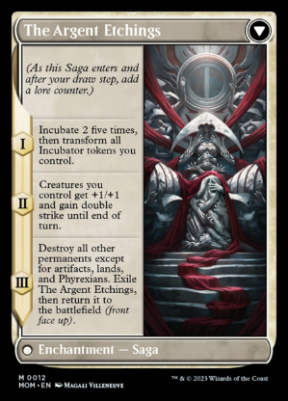
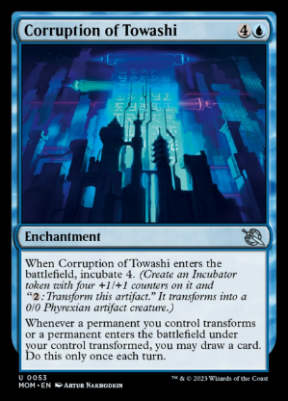
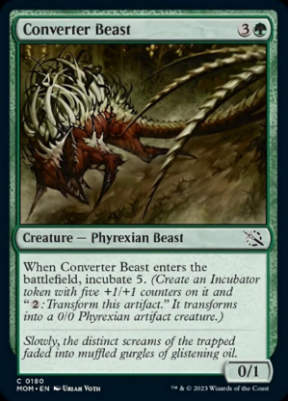
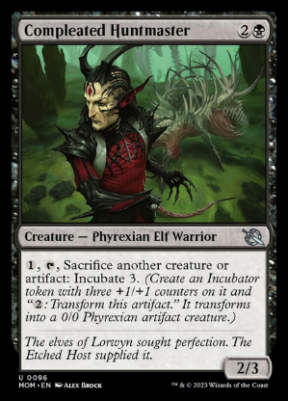
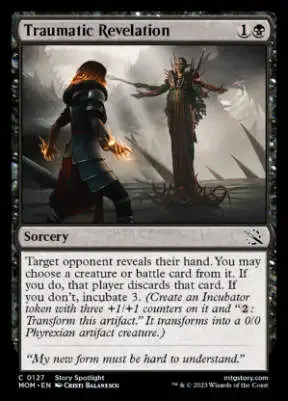
End Step
If you couldn’t tell from the contents of the article – I love this mechanic. It’s super versatile and the strongest incubate cards will find homes in plenty of MTG decks. I know I’ll be building around them in Standard, Modern, and Commander. I hope today’s article has been of some use to those checking out the MOM mechanics and that you walk away with a better understanding of what it is, how it works, and why it’s good. Now, get out there and play some MTG.
